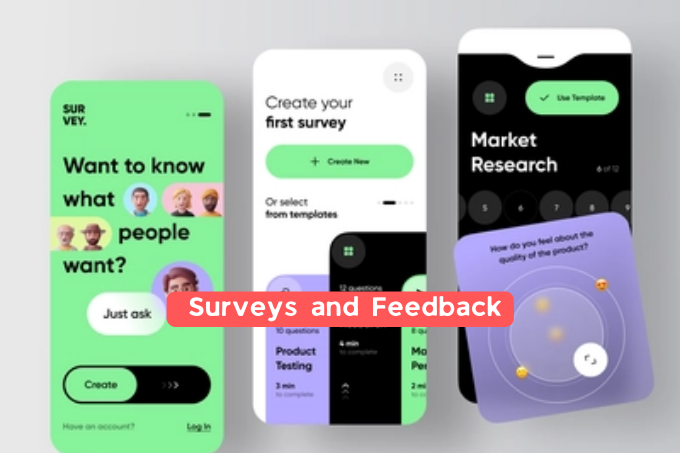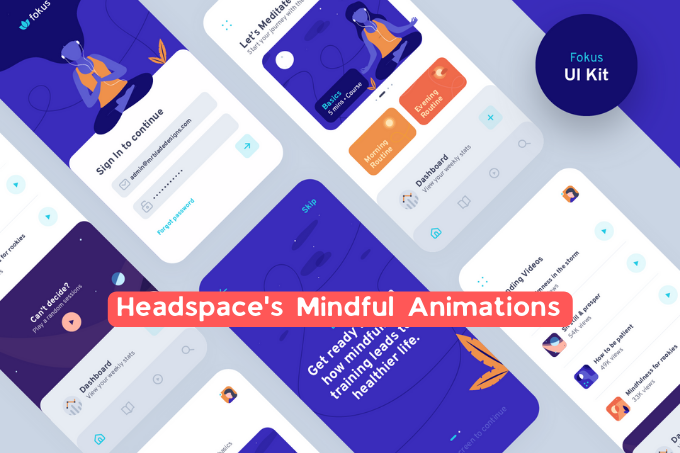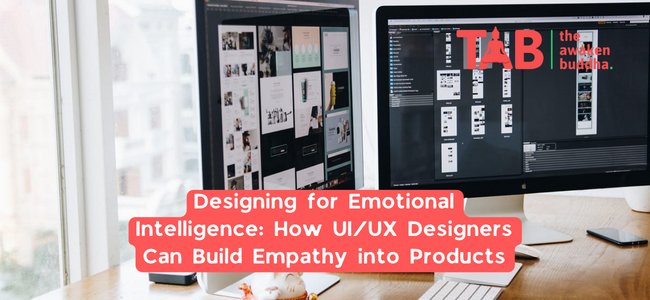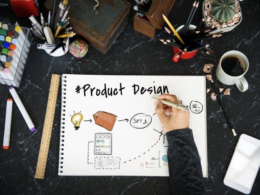In the contemporary digital mural, the role of UI/UX designers has taken on heightened significance. The rising need for user experiences that are both seamless and intuitive places greater expectations on designers to craft products that operate flawlessly while eliciting positive emotional responses from users. Emotional intelligence, which involves perceiving and regulating emotions, has emerged as a pivotal element in UI/UX design. This article delves into how UI/UX designers can infuse empathy into their products and develop designs that exhibit emotional intelligence.
Table of Contents
1. Understanding Emotional Intelligence in UI/UX Design
2. The Importance of Empathy in Design
3. Designing for Empathy: Strategies and Best Practices
- Conduct User Research and Empathy Mapping
- Use Emotional Triggers and Feedback Mechanisms
- Prioritize Clarity and Simplicity
- Create Delightful Moments
4. Challenges in Designing for Emotional Intelligence
- Addressing Cultural and Gender Differences
- Balancing Emotions and Functionality
- Avoiding Manipulation and Exploitation
5. Measuring Emotional Intelligence in Design
- Surveys and Feedback
- Emotional Analytics and Biometrics
- A/B Testing and Experimentation
6. Examples of Emotionally Intelligent Design
- Apple Watch’s Heart Rate Monitoring
- Headspace’s Mindful Animations
- Google’s Microinteractions
7. The Future of Emotional Intelligence in UI/UX Design
1. Understanding Emotional Intelligence in UI/UX Design
Emotional intelligence entails recognizing and handling emotions in oneself and others. In the UI/UX design context, this translates into creating products that function effectively and possess emotional allure and relevance to users. By leveraging emotional intelligence, designers can fashion products that deeply connect with users, foster trust and loyalty, and carve out a distinctive identity in a competitive landscape.
UI/UX designers can employ emotional intelligence by comprehending users’ emotional states and developing products that cater to their requirements and anticipations. This necessitates a profound grasp of user behaviors, psychological factors, and cultural influences and the capacity to empathize with users and proactively foresee their responses.
2. The Importance of Empathy in Design
Empathy involves the ability to comprehend and convey the emotions of others. Practicing empathy in UI/UX design means immersing oneself in the user’s perspective and crafting products that align with their requirements and anticipations. This empathetic approach empowers designers to fashion products that transcend functionality, offering users significant and delightful experiences.
Empathy is pivotal in UI/UX design, empowering designers to grasp the user’s context, motivations, and emotions. This understanding, in turn, enables the creation of products that are pertinent, user-friendly, and emotionally captivating. Moreover, empathy equips designers with the foresight to anticipate user requirements and deliver solutions that surpass their expectations.
3. Designing for Empathy: Strategies and Best Practices
To create designs imbued with empathy, a user-centric approach that places understanding and empathy at the forefront is paramount. Here are several strategies and optimal approaches for crafting emotionally intelligent products:
Conduct User Research and Empathy Mapping
User research and empathy mapping are indispensable in comprehending users’ requirements, emotions, and behaviors. User research encompasses data collection methods such as interviews, surveys, and observation, while empathy mapping serves as a visual aid for organizing and consolidating user insights. Through analyzing this user data, designers can glean valuable insights into users’ emotional states, objectives, challenges, and inclinations, enabling them to fashion products that align with users’ expectations and address their needs effectively.
Use Emotional Triggers and Feedback Mechanisms
Within design, two critical components exist: emotional triggers and feedback mechanisms. Emotional triggers encompass visual, auditory, or tactile design elements that convey particular emotions to users. Conversely, feedback mechanisms provide users with information concerning their actions and advancement in the context of the product or experience.
Prioritize Clarity and Simplicity
Emotionally intelligent design hinges on the fundamental principles of clarity and simplicity. When designers streamline their products to be straightforward and comprehensible, they effectively minimize user frustration and bewilderment, fostering an environment of trust and self-assurance. This clarity and simplicity are attainable through precise language, straightforward navigation, and intuitive interactions.
Create Delightful Moments
Delightful moments in design are those unexpected encounters that evoke surprise and joy among users. These instances can take on various forms, ranging from the simplicity of a clever error message or a playful animation to the complexity of personalized recommendations or interactive social features. Such delightful moments engender positive emotions, elevating the overall user experience and significantly increasing the likelihood of users returning to and advocating for the product.
4. Challenges in Designing for Emotional Intelligence
Designing with emotional intelligence presents its own challenges, including navigating cultural and gender disparities, striking a balance between emotions and functionality, and steering clear of manipulation and exploitation.
Addressing Cultural and Gender Differences
Cultural and gender disparities can significantly influence how users perceive and respond to design elements. To create inclusive products and be considerate of diverse user requirements and expectations, designers must maintain awareness of these distinctions and actively incorporate them into their design processes.
Balancing Emotions and Functionality
In product design, striking a harmonious equilibrium between emotions and functionality is paramount. While emotions are instrumental in crafting engaging and purposeful products, functionality remains the linchpin for ensuring the products are valuable and efficacious. Designers must conscientiously navigate this balance, giving precedence to user needs and expectations throughout the design process.
Avoiding Manipulation and Exploitation
Designers must avoid any inclination to manipulate or exploit users’ emotions to their advantage. In emotionally intelligent design, the paramount focus should be safeguarding users’ well-being, eschewing any employment of emotional triggers or feedback mechanisms that could coerce or deceive users.
5. Measuring Emotional Intelligence in Design
Assessing emotional intelligence in design can pose difficulties, yet it remains crucial to crafting compelling and efficacious products. Below are some methodologies for gauging emotional intelligence in design:
Surveys and Feedback

Surveys and feedback constitute conventional means of appraising user emotions and responses to products. Through collecting survey data and feedback, designers can acquire valuable insights into users’ emotions, preferences, and areas of dissatisfaction, which can then be harnessed to enhance the product.
Emotional Analytics and Biometrics
Emotional analytics and biometrics represent burgeoning technologies capable of quantifying users’ emotions and physiological reactions to design components. By employing sensors and sophisticated algorithms, designers can monitor and evaluate users’ emotional responses, fine-tuning and optimizing design elements.
A/B Testing and Experimentation
A/B testing and experimentation stand as methodologies for assessing and refining design components. Through the comparative evaluation of diverse design choices and the measurement of user reactions, designers can pinpoint the most efficacious design elements and fine-tune the product to enhance its emotional intelligence.
6. Examples of Emotionally Intelligent Design
Here are some examples of emotionally intelligent design:
Apple Watch’s Heart Rate Monitoring
The heart rate conclusion feature on the Apple Watch offers users immediate insights into their heart rate, assisting in managing stress and activity levels. Through the delivery of personalized feedback and motivational cues, this feature elevates the user experience by fostering greater engagement and emotional intelligence.
Headspace’s Mindful Animations

Headspace employs playful and captivating animations known as “mindful animations” to aid users in meditation and stress management. By incorporating these delightful animations and user-friendly interactions, Headspace cultivates a user experience that is more engaging and imbued with emotional intelligence.
Google’s Microinteractions
Google incorporates micro-interactions with subtle design elements that elevate the user experience and elicit positive emotions. For instance, Google’s “I’m Feeling Lucky” button infuses a sense of excitement and delight, while its autocomplete feature anticipates user needs and offers valuable suggestions, further enhancing the user experience.
7. The Future of Emotional Intelligence in UI/UX Design
The trajectory of emotional intelligence in UI/UX design’s future is deeply intertwined with the emergence of transformative technologies like AI and machine learning. These innovations hold the potential to fundamentally redefine how designers gauge and enhance emotional intelligence within their products. Utilize the potentiality of AI and machine learning; designers can envision creating products that are more personalized and inherently emotionally intelligent, dynamically adapting to users’ unique needs and preferences.
An additional trend that holds the potential to mold the future of emotional intelligence in UI/UX design is the integration of social and environmental responsibility. As user awareness regarding social and environmental concerns heightens, an increasing demand for products resonating with their values and principles increases. In response, UI/UX designers will be compelled to factor these considerations into their design workflows, crafting products that are not solely emotionally intelligent but also imbued with social and environmental responsibility.
Conclusion
Emotional intelligence is a pivotal element in UI/UX design, offering the potential to cultivate user experiences that are engaging and imbued with meaning and gratification. Designers can achieve emotionally intelligent products by giving precedence to qualities such as empathy, clarity, simplicity, and the infusion of delightful moments, fostering a profound connection with users. Nevertheless, designing for emotional intelligence presents its own set of challenges, including considerations related to cultural and gender disparities,
FAQs
1. What is emotional intelligence in UI/UX design?
Emotional intelligence in UI/UX design refers to the ability of designers to create developments that connect with users on an expressive level by prioritizing empathy, clarity, simplicity, and delightful moments.
2. Why is emotional intelligence critical in UI/UX design?
Emotional intelligence is essential in UI/UX design because it can create engaging, meaningful, and rewarding user experiences that connect with users on a deeper level, increasing user satisfaction, loyalty, and advocacy.
3. What are some challenges in designing for emotional intelligence?
Some challenges in designing for emotional intelligence include addressing cultural and gender differences, balancing emotions and functionality, and avoiding manipulation and exploitation.
4. How can emotional intelligence be measured in design?
In design, emotional intelligence can be measured through surveys and feedback, emotional analytics and biometrics, and A/B testing and experimentation.
5. What is the future of emotional intelligence in UI/UX design?
The future of emotional intelligence in UI/UX design will be shaped by emerging technologies such as AI and machine learning, social and environmental responsibility, and increasing user demands for emotionally intelligent and engaging products










